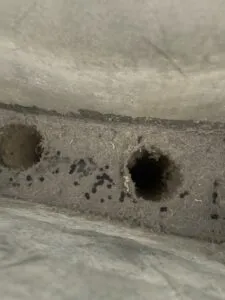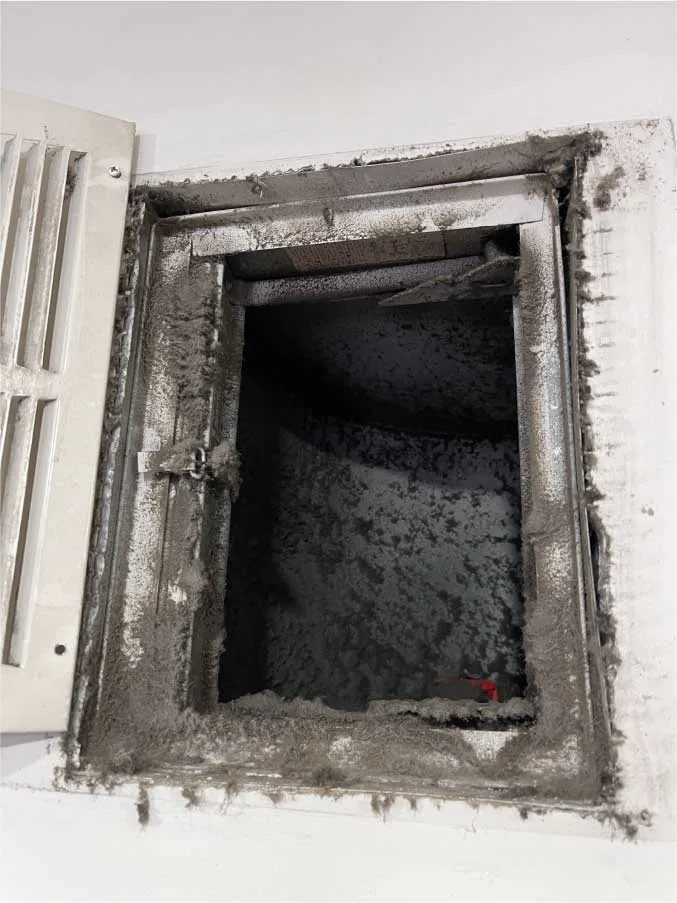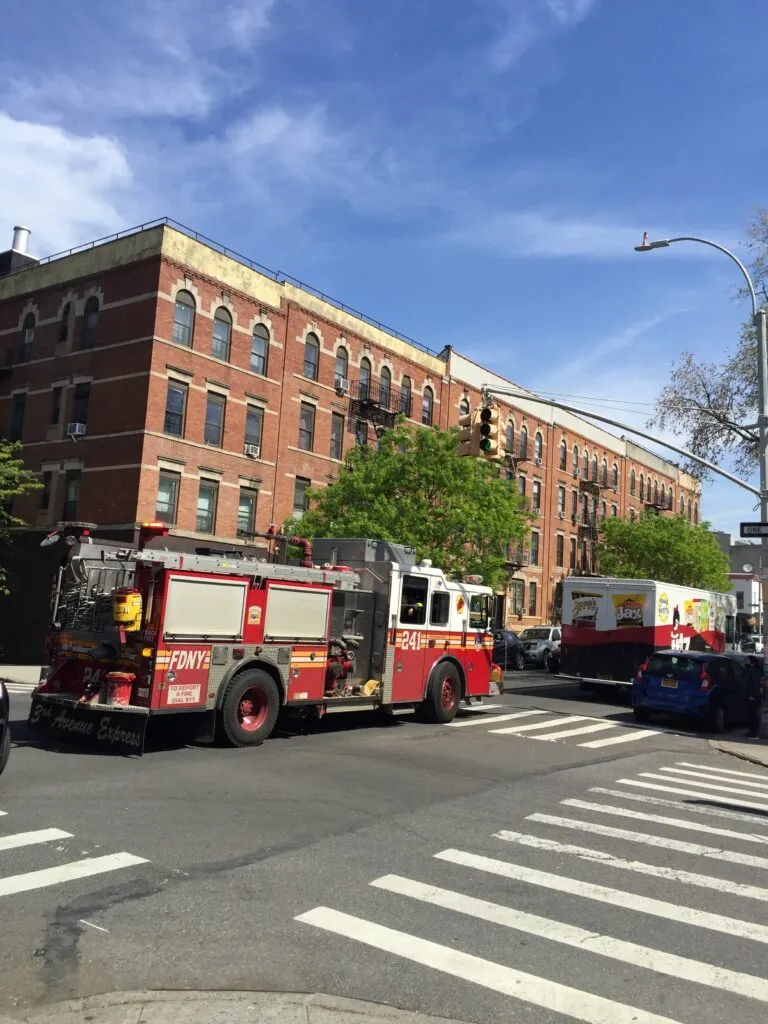 Mold Air Duct Cleaning
Mold Air Duct Cleaning
Is It Mold on My Ceiling? Black Mold is #1 Hazard.
Mold in the house and what are mold danger? Can Air Duct Cleaning Help, Is It Mold on My Ceiling mold danger is 1 Hazard?
To ensure your family’s health and well-being, you devote a lot of time and effort to cleaning and sanitizing your house, especially the bathroom. The ceiling and tile in your shower will eventually show black spots, no matter how hard you clean.
Is It Mold on My Ceiling mold danger is 1 Hazard
Mold or mildew is almost always behind these black dots.
Mold and mildew can always be a problem in bathrooms and kitchens. It’s more common to see mold and mildew in these rooms because they get so much water. Usually, bathrooms don’t have the right ventilation to dry out moisture.
How Does Mold Get In Your Bathroom?
Mold in your bathroom might make you think you didn’t clean well. Although there are steps you can take to lessen your risk of developing mold, your cleaning regimen is probably extremely effective. Dirt and grime don’t make mold grow. Mold in your bathroom can be caused by a few things:
- Overabundance of oxygen.
- It’s a place of darkness and long shadows.
- Lots of moisture or water leaks.
- Mold loves both wood and other surfaces.
- Inadequate ventilation.
The outside world is full of mold. When it gets into your bathroom, how does it get there? As mold colonies multiply, reproduce, and spread, they release spores into the air.
The chances of spores landing on your skin, shoes, clothing, pets, and other family members are always present when you’re out and about, working, running errands, walking, etc. Your home gets infected with these spores every time you come home.
What Is Black Mold?
Dark, humid areas of homes are common destinations for black mold. The spores are released into the air, and you can breathe them in or absorb them through your skin. Those spores can also accompany you through your home, spreading all over.
The only thing that makes black mold different from other common household molds is that it’s toxic. Many people just call it toxic mold. As far as mold dangers go, we can say that black mold is quite dangerous if left unattended, especially for people at high risk.
Black mold is most commonly associated with respiratory problems. If you’ve been exposed to black mold spores for a while, you might cough, sneeze, or have an itchy throat. People with respiratory issues or infants at higher risk might be at risk for long-term health problems.
Black Mold Warning Signs
Getting rid of black mold when you find it is the most effective way to prevent breathing in spores. Identifying it will help you figure out how to remove it. Black mold might be a problem if you see:
- Visual Development
If you suspect mold growth inside your home, use a flashlight and inspect hot spots with it. Black mold might look black, but any abnormalities could mean it’s contaminated. You should visit the following hotspots:
- Inside cabinets
- Crawlspace
- Ceilings
- Toilet and tank
- Windowsills and doorframes
- Underneath sinks
- Closets
- Caulk and grout
- Attic
- Air vents
- Musty Odor
Mold has a strong smell. There’s often a musty, earthy smell, and it might even smell like rotting food. You might smell mold, but you can’t see it. If this happens, you should look for water-damaged areas.
Moisture is what mold needs to grow. The smell of mold might mean you have water damage or a leaking pipe in a normally dry area.
If you are worried about mold growth in your home but can’t smell it, it’s better to ask a friend or some neighbors to visit. They can tell you if they smell a musty odor in your home. Even if your home smells bad, your nose gets used to it.
Outsiders may be able to smell it if your nose has become accustomed to the mold.
- Colorful Growth Spots
It’s often dark in color, as it’s called black mold. Look for black, dark green, or dark brown circular spots to see if there’s black mold. There are some types of black mold that look orange or have white flecks. Black mold is usually fuzzy. When there’s a lot of mold, it might look like a black stain on your walls, floors, or ceilings.
- Patches of Water Damage
Water damage spots are an excellent way to detect black mold early on. Do you have a leaky roof or a burst pipe? The spores of black mold can quickly grow here.
Mold can grow wherever there’s water damage or leaks. Your walls or ceiling might look darker if you have water spots. Mold can grow in water rings if they’re not inspected right away.
Black Mold Symptoms
The challenge with indoor mold growth is that different people react to exposure in various ways. When we talk about mold dangers, we mainly talk about the health effects of mold on individuals.
People can have different adverse health effects. Preconceived conditions, genes, exposure intensity, duration, and frequency are all factors that impact the health effects faced by individuals.
Here are some common symptoms:
The presence of brain fog and difficulty with cognition
- Fatigue that lasts for a long time
- Allergy symptoms or a recurring cold
- Hormone dysregulation
- Having digestive problems
- Swings in mood are quite common.
- Migraines and/or headaches are common.
- Joint and/or muscle aches
You don’t have to worry about black mold killing you. There are, however, some groups that are more prone to getting sick from black mold:
- Youth
- Elderly
- Immune-compromised people
- Chronically ill people
Why Does Black Mold Grow?
Every area in which black mold has started growing has been or will be damp since black mold thrives in damp environments. The chances of black mold are higher in areas with water damage, like a leaking pipe under the sink or flooding from a storm. Gypsum board, carpet, and drywall all fall into this category.
It’s easy for black mold spores to get into your house. This includes elements that enter from the outside on items of clothing, pet fur, and summer breezes that enter through open windows.
In order to prevent the mold colony from growing in the future, you’ll need to fix the moisture issue and remove any black mold-affected areas.
What’s The Best Way To Diagnose Black Mold Exposure?
Schedule an appointment with your doctor if you’ve been feeling sick and think you’ve been exposed to mold. Your doctor will test your mold sensitivity and health effects.
You’ll get a physical first. They’ll listen to your lungs while you breathe. You’ll also get an allergy test after they take your medical history. Extracts from different types of mold are scratched on the skin or pricked.
If you experience swelling or a reaction, you may be allergic to black mold. You might also need a blood test to find out how your immune system responds to mold.
Keep Your Home Black Mold-Free
Black mold can cause allergies, so you can take steps to get rid of it. A black mold infestation is easy to spot because it’s black and splotchy. There’s also a musty smell to the mold. It’s usually growing:
- In the fridge
- Under the basements
- Over the showers
- The air conditioners inside
- The underside of sinks.
Mold can usually be removed with a mold-removal spray if it’s small. You can also mix 1 cup of home bleach with 1 gallon of water to create a bleach solution.
Black mold can be hard to remove, so hire a professional. Renters should tell their landlords about mold so they can get a professional to remove it.
Identifying mold and removing it is easy with mold professionals. If mold growth is very extensive, you might have to leave your house. If you get rid of the black mold, you can prevent it from coming back by:
- Keep your home dry with a dehumidifier.
- If your house gets flooded, clean and dry it.
- Make sure your shower, laundry, and kitchen are well-ventilated.
- Take care of leaky doors, pipes, roofs, and windows.
Ceiling and Wall Ghosting
Until now, we have talked about how black spots on your ceilings indicate mold growth in your home. However, sometimes it’s mold out there.
It’s common for inspectors and contractors to get calls from homeowners reporting mold on their walls and ceilings. The mold patterns are typically described as black stains or blotches on the walls and ceilings that appear to follow the house’s structure.
Fortunately, the stains are often not mold and aren’t a health or structural hazard for homeowners. Basically, what they’re talking about is “ghosting” or “thermal bridging.” It’s not harmful, but it’s annoying.
Ghosting occurs when a portion of the wood frame in a building is not adequately insulated and slightly moist, warm, and perhaps sooty interior air condenses on the cooler sections of the walls and ceiling.
Sooty black stains show up on the walls and ceilings of your home as a result. Because metal is more likely to become a condensing surface, stains can occasionally even disclose nails in a wall.
Mold or structural problems aren’t usually caused by condensation, but it makes your walls and ceiling look shabby.
What to Do If You’re Exposed to Black Mold
Black mold can be hard to remove from your home, but there are steps you can take that will limit your exposure.
- Block Off Infested Areas
Tape plastic sheeting over the doors in the part of the house where there’s black mold. You can lightly spray the mold with water if the leak has been fixed and the area is dry.
- Clean Sensibly
When you’re cleaning moldy areas by yourself, use the chemicals correctly and keep the area clean.
- Put an End to Moisture
Turn off the water or fix the leak if mold is growing near a persistently leaky sink, tub, or toilet. Plastic tarps help cover roof leaks and window leaks until they’re fixed.
- Proper Disposal of Cleaning Materials
To prevent contamination, seal heavy-duty plastic bags with cleaning supplies, disposable protective gear, and plastic sheeting.
- Put On a Mask
Make sure you wear a mask that prevents mold spores from being inhaled and disposable clothing or disposable protective gear
What You Can Do To Prevent Black Mold
If you live in a dry climate, black mold or other toxic molds can grow in your home since mold spores are everywhere. The good news is that you can take steps to prevent mold growth.
- Maintain a Dry Environment
Wet clothes, shoes, and towels shouldn’t be piled up. Two days are all it takes for mold to take hold, grow, and stink. Dry your wet stuff faster by hanging it up.
Using a squeegee to dry shower stalls and tubs is a good idea. If you’re mopping floors, steam cleaning fabrics, or power washing surfaces, wait until it’s warm and breezy.
- Humidity Control
Moisture is what mold needs to grow. Maintain a 60 percent humidity level in your house to avoid this.
- Make Your Home More Ventilated
Don’t forget to use fans in the bathroom and kitchen when you’re cooking to get rid of steam and speed up drying. It’s great to have ceiling fans and circulating fans when it’s humid out. Dry, breezy days are perfect for opening doors and windows.
- Fix leaks
It only takes a small leak to allow mold to grow on wood, drywall, and grout. Make sure you fix leaky pipes, fixtures, windows, and roofs as soon as possible.
- Ventilation and Ductwork
Ensure your HVAC and clothes dryer ductwork are cleaned at least once a year to prevent clogs and leaks.
- Place Moisture Barriers in Place
There’s a lot of moisture in basements and crawl spaces. Make sure moisture from the earth doesn’t enter the space with moisture barriers and specialty coatings.
- Utilize a Dehumidifier
Dehumidifiers can remove moisture from your basement or laundry room if it’s humid. Make sure the appliances are well maintained and the water collection bin is empty every day.
Black Spots on Air Vents
Take a minute and notice if you suspect black spots on air vents. Or in recent days, have you felt any strange symptoms? If that’s the case, you might have black mold on air vents.
Stachybotrys chartarum, or black mold, can be stressful or even terrifying. This mold species is very poisonous and bad for the health of individuals who live nearby.
It’s important to remove the black mold immediately if you believe it’s growing around your air vents or anywhere in your home.
How to Tell If Your Air Vents Are Black
- A strong musty odor can be detected in the room.
- Vents, ducts, or drip pans that have black spots around them
- Feeling sick from allergies
- Breathing problems
- Headaches that don’t go away
- Feeling dizzy or nauseated
- Tiredness
The first sign of mold is usually a musty smell. Particularly if the smell only gets worse when the heating or air conditioning is on.
Unlike household molds and mildews, black mold, or Stachybotrys chartarum, has a strong smell. The smell is earthy, like dirt or rotting leaves, and is defined as musty.
Look around your air vents for black spots or black dust. Mold might be growing there. A wet, slimy texture is another sign of black mold, and black spots usually aren’t easy to get rid of. Make sure you wear gloves and other protective gear so you don’t touch the mold.
What Causes Mold To Grow In Air Vents?
A vent is a favorite place for mold to grow. Mold likes to grow in dark, isolated places with lots of dust. Mold grows when condensation or moisture accumulates. Homeowners should be worried about mold in their vents and HVAC systems.
The majority of mold issues are identified visually; if mold forms, it should be removed. However, you might not notice it unless you start experiencing symptoms because it’s hidden inside a vent or duct. Inhaling mold spores—and toxins in some cases—into the air presents a health risk.
You may spread mold spores throughout your home when mold grows in air vents.
It’s okay; don’t freak out. Humans aren’t poisoned by most household molds, but inhaling them can cause allergies.
Air Duct Cleaning and Mold Removal
There is no question that air duct cleaning is a highly effective method of removing mold from your ventilation system when performed properly.
Regular air duct cleaning means the complete removal of dust or mold from your air ducts. The main thing is that it is done correctly. This means that it has to be done by professionals who have the knowledge, training, and equipment to inspect and deal with your air ducts.
You may try to do it on your own; however, chances are that it will be less effective. In addition, there is a risk that you may damage your HVAC system too. So why not opt for an easy and effective way of dealing with dust or mold by calling a professional air duct cleaning company?
As a homeowner, it’s easy to control mold, but you should also know when to call in a professional air duct cleaning company. Mold loves to hide in places you can’t see it, like drywall, under sinks, and in carpets.
Likely, the mold problem isn’t just a one-off issue if it covers more than about 10 square feet. Do you have mold-related health issues or smell a musty odor in your home? It’s time to call for professional air duct cleaning services.
Final Thoughts
No matter how much you clean your home, black spots are bound to appear on your ceilings.
This is so because many reasons encourage mold growth, and sometimes you can’t control them in a timely manner. However, there are a few steps that you can take to identify, treat, and prevent mold in your home.
Black mold dangers mainly include hazardous health effects on people. As a result, if you suspect the presence of black mold in your home, you should contact professional air duct cleaning services right away. This way, you will ensure the safety of your family members.




